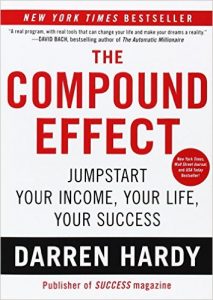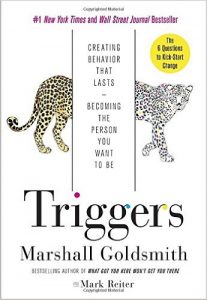
Anyone who has been learning and applying personal productivity tools and techniques for many years will have developed some positive habits for success. Many of these habits are probably already habits you are practicing (or trying to follow) in your life but I’ve recently established a new habit I don’t typically see mentioned. This habit is one that will multiply all the others – so I wonder; does this make it the most important?
I’ll begin by reviewing several of the common productivity/success habits typically practiced before discussing the multiplier. These are often discussed and recommended, and if you aren’t practicing some of these it may be better to start with these basics.
1. Exude a positive attitude:
It all begins with acting like you are the person you want to be. If you want to be happier, smile more. When someone asks you how your day is, answer “Great,” and believe it. We all choose our attitude, so begin by choosing to be positive and happy.
2. Set goals:
We all need to set some personal goals as a start. Anyone reading this article must be interested in productivity and know the need to establish your objectives first – in writing. A previous post shares further insights and suggestions for goal setting.
3. Begin with the end in mind:
When setting your goals, make sure to consider what is most important to you . . . your values. Imagine what advice your 95-year-old self would give your current self. Another great thought exercise is considering what you want your funeral to be like. Who will attend and why? What do you want your family, friends, and coworkers to say about you at your funeral?
4. Plan your day:
All the goal-setting in the world doesn’t matter unless we translate our goals into our daily routines and schedules. All of us have the same time available to us in a day; it is what we do with it that matters. Schedule the big rocks and eat your frogs first. Avoid (or at least put off) time-wasters and distractions like silly games on your cell phone, Facebook, and checking for new e-mail.
5. Take the initiative to act:
We aren’t productive if we don’t accomplish anything . . . so follow your plan and get things done! The first step is often the hardest . . . so figure out the first task in a goal and get started now. You must have a bias to action.
6. Establish beneficial habits and routines:
Finally, turn these productivity habits into regular routines.
A few key daily routines can include:
- reviewing your goals,
- planning your day,
- eating good, healthy foods (and not too much),
- getting regular exercise,
- sleeping the same schedule,
- and taking time to de-stress (via meditation, exercise, reading, etc.).
Make it easy to do all these things by adding them to your daily schedule (they are big rocks) where possible.
Several years ago I established a new productivity habit and I’ve been improving upon it since. It is common in business to regularly measure your corporate results and compare them to your goals and benchmarks. We should also measure the performance of our employees. For some reason, it is not as common to measure our own lives and our personal productivity. There is no point in setting goals if we never review them and measure how we are performing. When should we adjust our goals or refocus? What has changed in our lives to cause us to want to change? Are our habits working for us? Self-evaluation is a personal productivity multiplier.
Measuring your success is critical, and I’ve learned that there are several methods of evaluation. These are presented below as levels, with each level an improvement upon the previous level. A lower level is also a prerequisite to a more advanced level.
 Level 1:
Level 1:
At first, I just compared my results to my goals. This resulted in an outcome that was either success or failure but didn’t lead to any improvement. If I met my goal I was happy and if I failed . . . well then I needed to “try harder” or rewrite my original goal! Measuring this way was better than nothing, but it didn’t help me create and maintain habits of success.
 Level 2:
Level 2:
I set up an improved system after reading The Compound Effect by Darren Hardy. I first completed a habit assessment (see the resources at the link above for this template) and then established a weekly rhythm register. This forced me to assess my daily routine and see if I was developing habits of success – habits that would allow me to achieve my goals. For example, when setting a goal to “weigh 120 pounds at the end of the year” you will need to establish or change several habits or routines to get there. Something like the below:
| Goal | Weigh 120 pounds at the end of the year |
| New habits to start | – Eat a healthy breakfast every morning – Exercise three times per week for one hour |
| Poor habits to end | – No more midnight snacking |
| Habits to continue | – Average one alcoholic beverage daily – Don’t buy chips and ice cream |
You don’t want to measure results by stepping on the scale at the end of the year and recording success or failure. Instead, you determine the habits needed in order to meet your goal and measure whether you are creating these habits in a daily or weekly review.
 Level 3:
Level 3:
I have developed many new habits by making sure they become part of my daily rhythm or routine, and this has allowed me to achieve many of my personal goals. I have again recently improved upon my rhythm register method for goals that may be harder to measure than by stepping on a scale or checking a box.
I’ve improved by changing from passive questions to active questions. Author and coach Marshall Goldsmith shares the active questioning technique in his book Triggers: Creating Behavior That Lasts–Becoming the Person You Want to Be. Active questions focus on intentionality and effort: are you trying as hard as you can to achieve a goal? Active questions have helped me improve in many areas, but especially interpersonal goals where my goal is to be a better spouse, husband, or friend.
For example, if you set a goal to “get things done at work every day” how will you measure your results? Active questioning encourages thinking about what you can do to take responsibility. A good active question might be “Did I try my hardest at work today and get the results I wanted?” This can minimize the excuses we create for ourselves.
Level 4:
This level offers an improvement in accountability from the third level. Rather than depending upon a habit of self-evaluation, make an agreement with a coach or peer to check in with you regularly (every evening, or at least weekly) and ask you your active questions. We all know how hard self-accountability is; there is a myriad of excuses we can offer to ourselves for not taking the time to reflect upon our intent and results. Your coach will help hold you accountable and will rebuff a poor excuse for effort.
The questions below are the first six questions Marshall Goldsmith reviews nightly. Notice that they are all active questions that measure his effort.
- Did I do my best to set clear goals?
- Did I do my best to make progress in achieving my goals?
- Did I do my best to find meaning?
- Did I do my best to be happy?
- Did I do my best to build positive relationships?
- Did I do my best to be fully engaged?
Goldsmith scores himself on a 1-10 scale and compares it to previous days. He notes that “adding the words ‘did I do my best’ injected the element of personal ownership, of responsibility into my Q&A process.” He reports his scores on a daily phone call to his own coach. I personally have not progressed to what I call here the “level 4” of measuring results but may get there in the future.
This article was written by Steve Musica, President of Lean East. All rights reserved. Please feel free to share this article and leave us your feedback in the comments section. I would especially like to hear your tips on improved methods for measuring results.

 Level 2:
Level 2: Level 3:
Level 3:
Related Posts
How to Use Kotter’s 8-Step Process for Leading Change
The Continuing Evolution of the Employee Using AI
10 Great Leadership Lessons from Elon Musk II